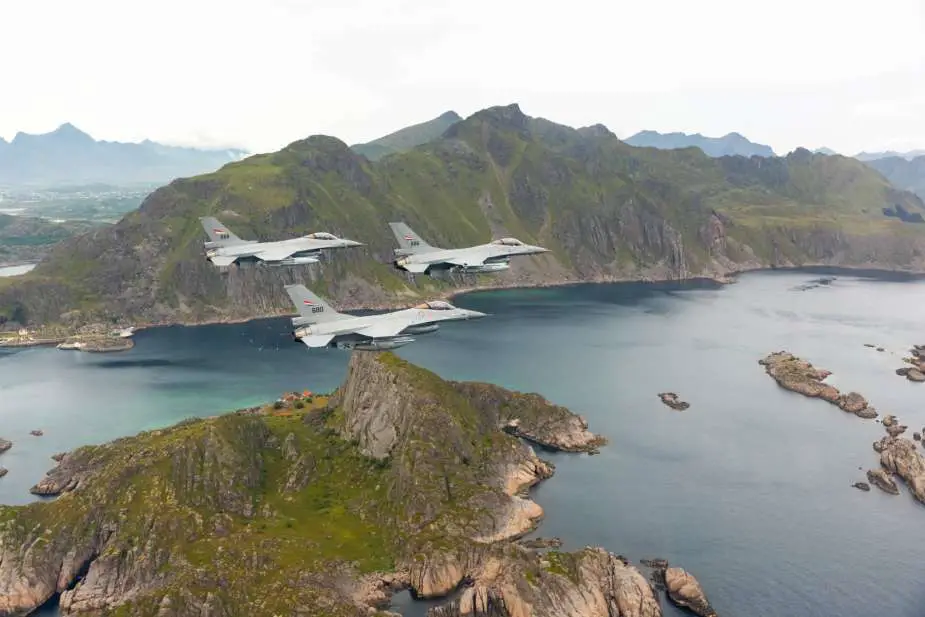Norway has announced plans to increase its military spending by approximately $56 billion over the next twelve years, until 2036. This decision by the Norwegian government revealed on April 5, 2024, aims to strengthen the nation's defense in response to Russia and other security challenges.
Follow Army Recognition on Google News at this link

By 2036, annual defense spending will be about 83% higher than current levels after adjusting for inflation (Picture source: Forsvadep)
This substantial increase in military expenditure will elevate the total defense budget to 1.62 trillion crowns during this period. Prime Minister Jonas Gahr Støre described this plan as a significant enhancement across all branches of the armed forces, with the Finance Minister noting that by 2036, annual defense spending will be about 83% higher than current levels after adjusting for inflation.
This move comes amid heightened debate in Norway on military spending, spurred by the conflict in Ukraine and the perceived need to guard against potential Russian aggression. Despite Norway sharing an Arctic border with Russia and having no history of conflict with its eastern neighbor, the government believes it's crucial to prepare for a more dangerous and unpredictable Russia in the coming years.
Thanks to its sovereign wealth fund, the world's largest with assets totaling 17 trillion crowns, Norway can afford this defense spending increase without cutting budgets for hospitals or schools. The government also intends to maintain its annual spending from the wealth fund to 3% of total assets.
Norway has committed to raising its defense spending in 2024 to 2% of its GDP, aligning with other NATO members' objectives. Initially, Norway planned to reach this target by 2026 but had already allocated 1.57% of its GDP to defense in 2022, according to NATO data.
The new long-term defense plan includes significant force enhancement, more personnel, and new capabilities. "Ensuring the security of the Norwegian people is the government's most fundamental task. We need a defense that is fit for the emerging security environment," stated Støre. The plan specifically mentions bolstering the navy with new frigates, submarines, and other vessels, introducing Norway's first long-range air defense system, expanding the army with three brigades, and increasing the national guard to 45,000 soldiers.
Norway's economic model, based on utilizing its natural resources, uniquely positions it to increase national security spending without compromising public services. The proposed defense investments are expected to benefit the entire country by creating jobs and stimulating Norwegian investments.
The government will focus on improving the current defense structure, investing in military personnel, enhancing surveillance capacity, and establishing a robust maritime and air defense package. The plan also aims to enhance Norway's capability to receive allied reinforcements and operate in coordination with allied forces, including Sweden and Finland, within the NATO framework.
This ambitious plan will require significant resources, more personnel, and substantial investments, committing the current government, future governments, and parliament over time. It aims to ensure long-term stability and predictability for the Norwegian armed forces, sending an important signal to allies and other international actors. Defense Minister Bjørn Arild Gram emphasized that while Norway and NATO pose no threat to anyone, they must be prepared to defend themselves in case of crisis or conflict, thereby deterring any potential threats to their sovereignty.
In recent years, Norway, as an active NATO member, has engaged in significant military programs to modernize its armed forces and strengthen its defense capabilities against contemporary security challenges. These initiatives include acquiring 52 F-35 Lightning II fighter jets to replace the aging F-16 fleet, estimated at $10 billion, with deliveries starting in 2017 and continuing until 2024. Additionally, Norway plans to upgrade its submarine fleet by replacing the Ula-class submarines with four new 212 CD class submarines, a project in cooperation with Germany costing several billion euros, with deliveries expected in the early 2030s.
On land, Norway strengthened its forces by ordering 74 M2A4 combat vehicles and 8 recovery vehicles from German company Rheinmetall in 2019, aiming to renew and enhance ground troop capabilities. To replace the aging P-3 Orion fleet and bolster maritime surveillance and anti-submarine capabilities, Norway invested approximately $1.5 billion in five P-8A Poseidon aircraft, with deliveries starting in 2022.
Beyond conventional domains, Norway has also focused on developing its cybernetic and space capabilities, including protecting critical infrastructure and enhancing surveillance and communication abilities, demonstrated by the launch of the NORSAT-2 military communication satellite in 2017.
Defense News April 2024
















